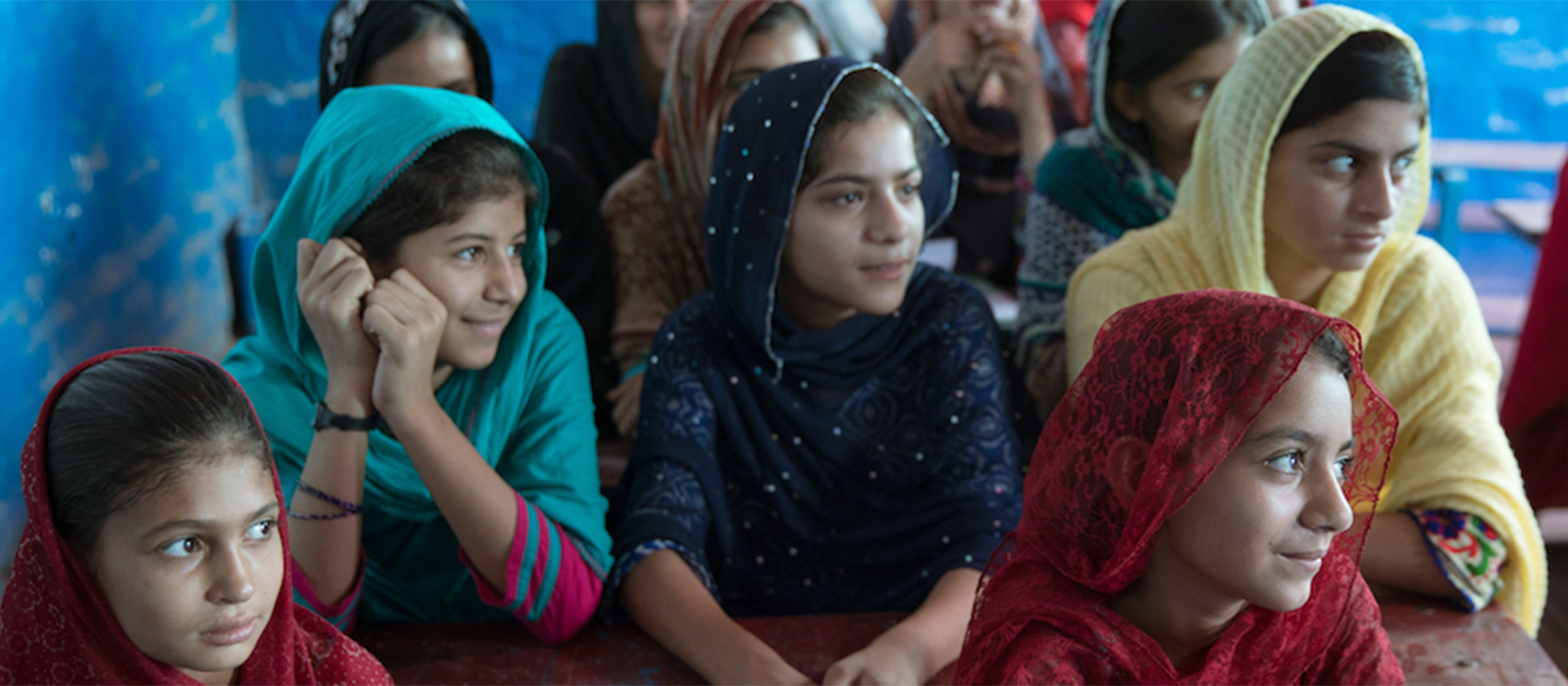
Courtesy of Insiya Syed for Malala Fund
If every girl worldwide received 12 years of free, safe, quality education, lifetime earnings for women could increase by $15 trillion to $30 trillion.
Introduction
If every girl worldwide received 12 years of free, safe, quality education, lifetime earnings for women could increase by $15 trillion to $30 trillion globally. Women with primary education only earn 14 percent to 19 percent more than women with no education at all, but those with secondary education earn almost twice as much. Girls who complete secondary school become healthier, more prosperous adults, with smaller families and children who are less at risk of illness and death and more likely to succeed. Further, girls with a secondary education become women who are more likely to participate in the labour force and be decision makers at home and in their communities.
Depriving girls of education, especially secondary school education, has dramatic costs for girls themselves, their families, communities and societies. These include greater rates of poverty, higher rates of child marriage, increased fertility rates, and reduced engagement in personal, familial and community decision making.
Malala Fund and World Bank Report
In its report published July 12th, Missed Opportunities: the High Cost of Not Educating Girls, the World Bank estimated the impact of depriving girls of education in over 100 developed and developing countries. As well, it looked more closely at the impact in 18 developing countries of girls being left out when it comes to secondary education.
The report’s findings show the transformative power of 12 years of free, safe quality education for girls by looking at its impact on six areas:
Earnings and standards of living
Child marriage and early childbearing
Fertility and population growth
Health, nutrition and well-being
Agency and decision-making
Social capital and institutions
Summary findings
Around the world, only three in four girls complete secondary education; in poor countries, only one in three do. In the 21st century economy, where human capital accounts for more than two-thirds of total wealth, girls’ secondary education is an investment in global prosperity.
Primary school education is not enough. Across many indicators, the benefits of primary education are very limited, even when compared to no education at all.
Women with primary school education only earn 15% more than women with no education at all. But women with secondary school education earn almost twice as much as those with no education at all.
Girls with only a primary education are just as likely as those with no education at all to marry and have children before they are 18.
Women with secondary school education are much less likely to have a baby who is stunted in growth, who, in turn, will be likely to earn less as an adult.
Secondary school education dramatically reduces rates of child marriage and early childbearing. With every year of secondary school a girl receives, the less likely she is to marry and have children before she is 18. Indeed, the report concludes that universal secondary education would effectively end child marriage.
Adult mothers avoid the risks of pregnancy and delivery affecting girls who may suffer complications that affect their health, make them more likely to lose a child before the age of five and/or have a child whose growth is stunted.
Women with secondary education who do not marry as children are more likely to use modern contraceptive methods.
Women with secondary education who do not marry as children are less likely to experience intimate partner violence.
Secondary school education has a multiplier effect that addresses stubborn problems affecting developing countries. Women with secondary education, directly and indirectly, help build the human capital wealth of their communities and societies.
These women earn more and have fewer children, which lifts the income of their families. They also have a greater ability to help others in their community.
Data from 17 developing countries show total fertility rates dropping by an average of almost 25% for girls who complete secondary education. Secondary education also decreases fertility rates by reducing child marriages. In 18 countries studied, if girls completed secondary education and married after age 18, fertility rates could decrease by 30 percent.
Women with secondary education make better health care decisions for themselves and their families and are more likely to engage in their communities, identifying needed improvements to public services and institutions.
Conclusion
Universal secondary education, especially in poor countries, has a multiplier effect that builds both wealth and health. Yet far too few girls around the world receive it. Only three in four girls complete their secondary education globally. In poor countries, that proportion is one in three. This lack of secondary education for girls has a price: an estimated loss of global wealth of between US $15 trillion and US $30 trillion.
Girls deprived of secondary school education are less likely to be part of the labour force, will earn less, are more likely to marry as children and have more children, at a cost to their own health and that of their families.
In a world where every girl receives 12 years of free, safe, quality education the future is profoundly different. Girls who receive a secondary education are more able and likely to contribute fully in their families, communities and societies, as earners, informed mothers, and agents of change.
Echidna Giving supported Malala Fund's contribution to this report.
